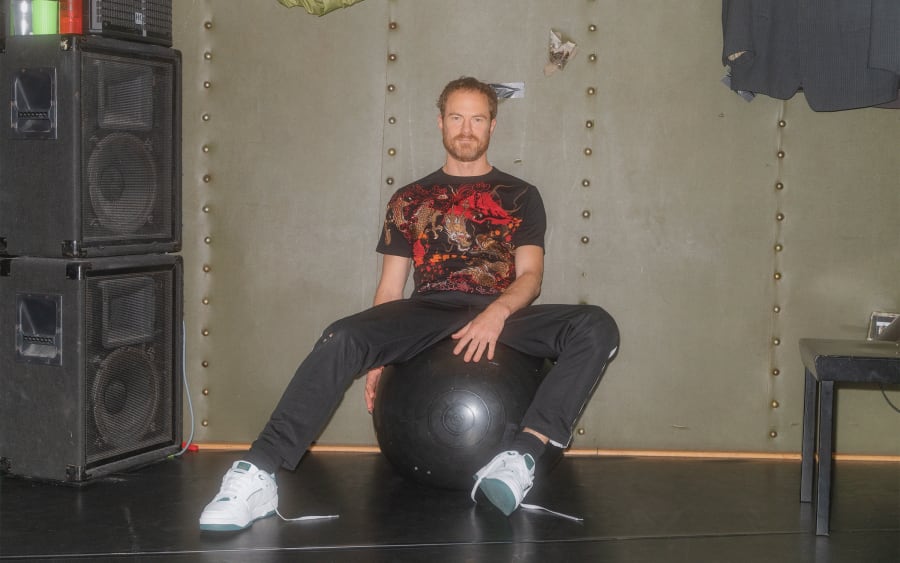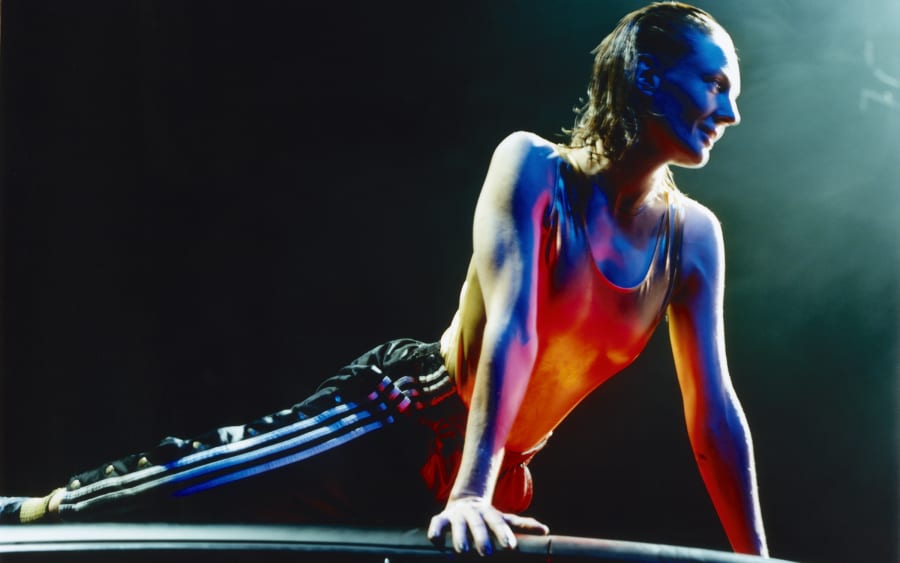At the Heiner Friedrich Gallery in New York in 1979, during the presentation of his legendary ‘Shadows’ series, consisting of 102 silk-screened and painted canvases, Andy Warhol claimed that his works were more akin to nightclub decor than art. As the Paris Philharmonic celebrates disco culture with the exhibition ‘Disco. I’m coming out’ (until August 17, 2025), Warhol’s words resonate with particular significance. If painting can capture the dancing body, can it somehow reduce the gap that separates image from movement?
At first glance, fixing a gesture or action on canvas inevitably means missing it, or even betraying it. Painting, however, asserts its own energies that bring it closer to choreography. While scenes of balls or bacchanals have proliferated throughout the history of Western painting, it was in the modern era that Edgar Degas, Paul Klee, Pablo Picasso, and Henri Matisse accorded the theme of dance emblematic status, evoking the rhythms and intensities of the time. The ultimate embodiment of this, is Matisse’s The Dance (1909), a dazzling instance of figuration brimming with life, marked by chromatic force and the boldness of its lines.
In 1993, Niki de Saint Phalle paid vibrant homage to Matisse during ‘Invitation to Dance’, her retrospective at the Musée d’art moderne de la ville de Paris. In her eponymous silkscreen, she depicted three of her ‘Nanas’ with their voluptuous curves and shimmering colors, carried away by dance with an abandon that conveys a full enjoyment of life. Here, dance reflects the liberation of bodies through art.
For both artists, the nudity of the figures associated dance with the disinhibition of desire, upon which psychoanalysis had cast a new light. The free choreographies of Isadora Duncan, Clotilde von Derp, and Ruth St. Denis marked the advent of a modernism liberated from academic constraints. Otto Dix celebrated its erotic charge in his portrayal of the provocative cabaret dancer Anita Berber. Expressing all the carelessness and eccentricity of the Roaring Twenties, she is dressed in a blood-red figure-hugging dress, her hip jutting out, close to contortion, in a reflection of her extreme personality. The painting illustrates the erotic potential of dance in its depiction of this sinuous, passionate body, driven by desire.
In complete contrast, Kerry James Marshall shows the intimacy of a couple whose slow, restrained dance sees them frozen in an embrace, the climax of a choreography of love seeking a state of equilibrium. In Slow Dance (1992-1993), the domestic space accentuates the physical proximity and the intensity of the romantic bonds of the dance partners, who are engaged in a scene of seduction to the sound of Baby, I’m for Real (1969), a song composed by Marvin Gaye and his wife, Anna Gordy Gaye. For Marshall, dance is also a strong marker of African American culture, whether it takes place in jazz clubs – Untitled (Club Scene) (2013) – or a hair salon – School of Beauty, School of Culture (2012). His paintings thus work to introduce minority representations into the repertoire of Western art history through the expression of popular practices.
Dindga McCannon, a member of the Weusi Art Collective and the Black Arts Movement, pushes this principle by making dance synonymous with personal and political emancipation. In her homage, Lavinia Williams, Legendary Dancer, Choreographer, and Teacher (2018) she surrounds a ballerina with about fifteen swaying silhouettes whose energy diffuses the entire composition. (She resided with Williams in Haiti during the fall of the dictator François Duvalier, or Papa Doc as he was also known.) In the ‘Dancers’ series, McCannon heightens the vivacity of the backgrounds with the effervescence of exalted dancers jumping and running, captured in full swing. In Women in Jazz #10 (2020), the female characters even seem to liquefy, undulating to the rhythm of the double bass and percussion, with arms and hair defying the laws of gravity.
The freedom of modern and popular dance does not, however, prevent us from appreciating its virtuosity and discipline. Painting ultimately makes a work of art from a form that normally undoes itself – that is, vanishes the moment it is produced. Collaborating with the Paul Taylor Dance Company, then with Yoshiko Chuma, Laura Dean, William Dunas, and Parsons Dance, Alex Katz represents rehearsals or performances, with life-sized figures. They offer an opportunity to immerse oneself in the shapes of the dancing bodies. Through his serene flat colors and cinematic framing, the artist submits the dancers to patient observation, freezing them in sculptural poses and positions (pointe, arabesque, lift, raised arm...), their expressions set (abandoned, eyes closed), normally so fleeting as to preclude close examination. Pictorial and choreographic representations thus merge in the depiction of a suspended moment, an instantaneity finally capable of inscribing the writing of a body in motion within the confines of the canvas.
Dindga McCannon is represented by Pippy Houldsworth Gallery (London), and Fridman Gallery (New York).
Alex Katz is represented by Gladstone Gallery (New York, Brussels, Rome, Seoul), Gray (Chicago, New York), Thaddaeus Ropac (London, Milan, Paris, Salzburg, Seoul), Timothy Taylor (London, New York), and Monica De Cardenas (Milan, Zuoz).
Kerry James Marshall is represented by David Zwirner (New York, Hong Kong, London, Los Angeles, Paris), and Jack Shainman Gallery (New York).
‘Disco. I’m coming out’
Philharmonie de Paris
Until August 17, 2025
Florian Gaité is a philosopher, lecturer at ESAAix (École Supérieure d'Art d'Aix-en-Provence), researcher (ACTE - Arts, Créations, Théories, Esthétiques, Paris 1 Panthéon-Sorbonne University) and art critic, member of AICA (Association Internationale des Critiques d'Art).
English translation: Art Basel.
Caption for header image: Dindga McCannon, Dancers #4, 2020. Photo: © the artist. Courtesy the artist, Pippy Houldsworth Gallery, and Fridman Gallery.
Published on May 6, 2025.


